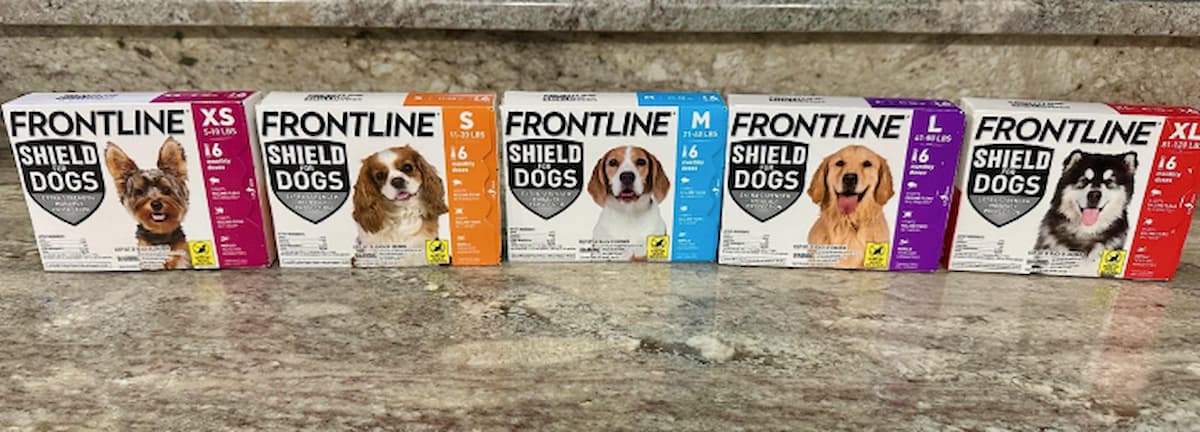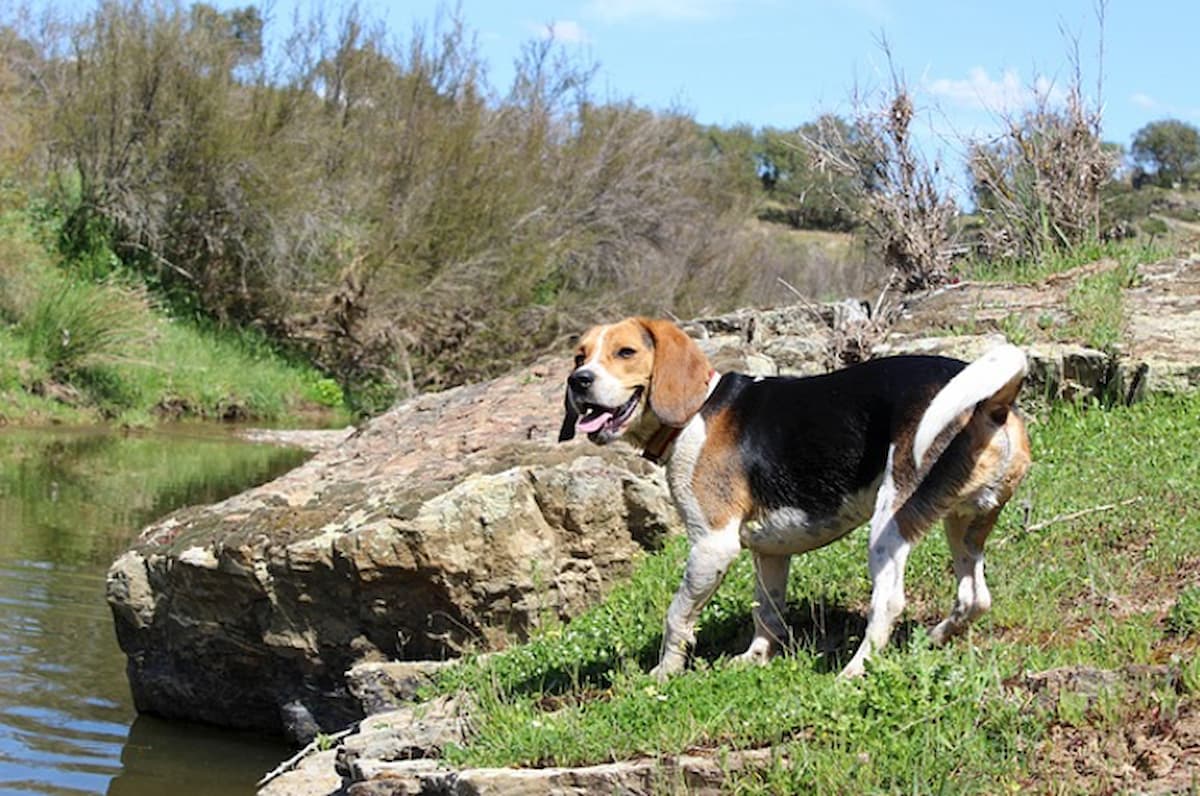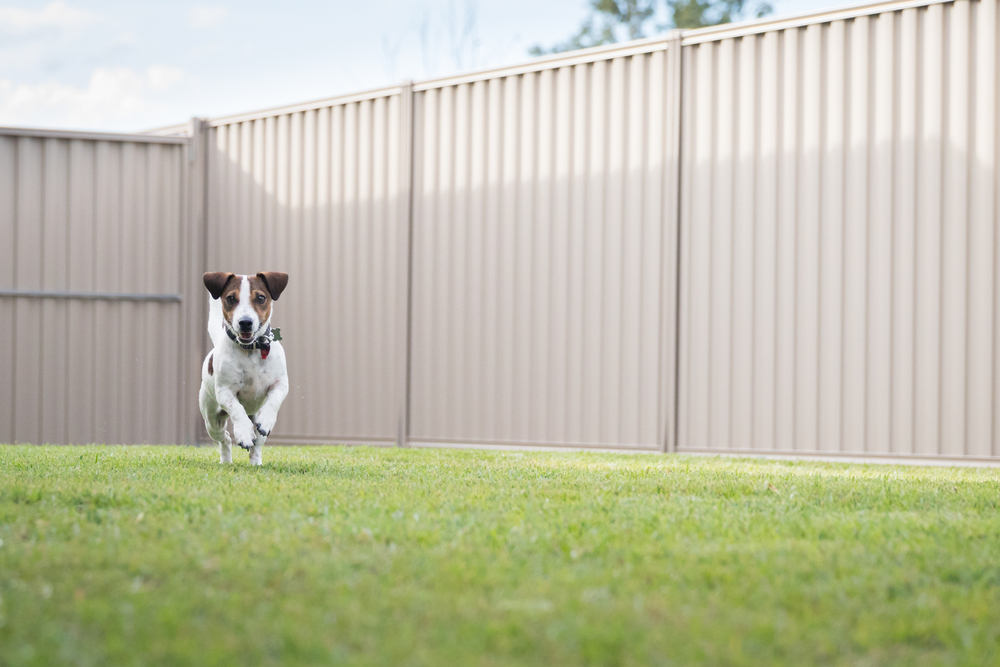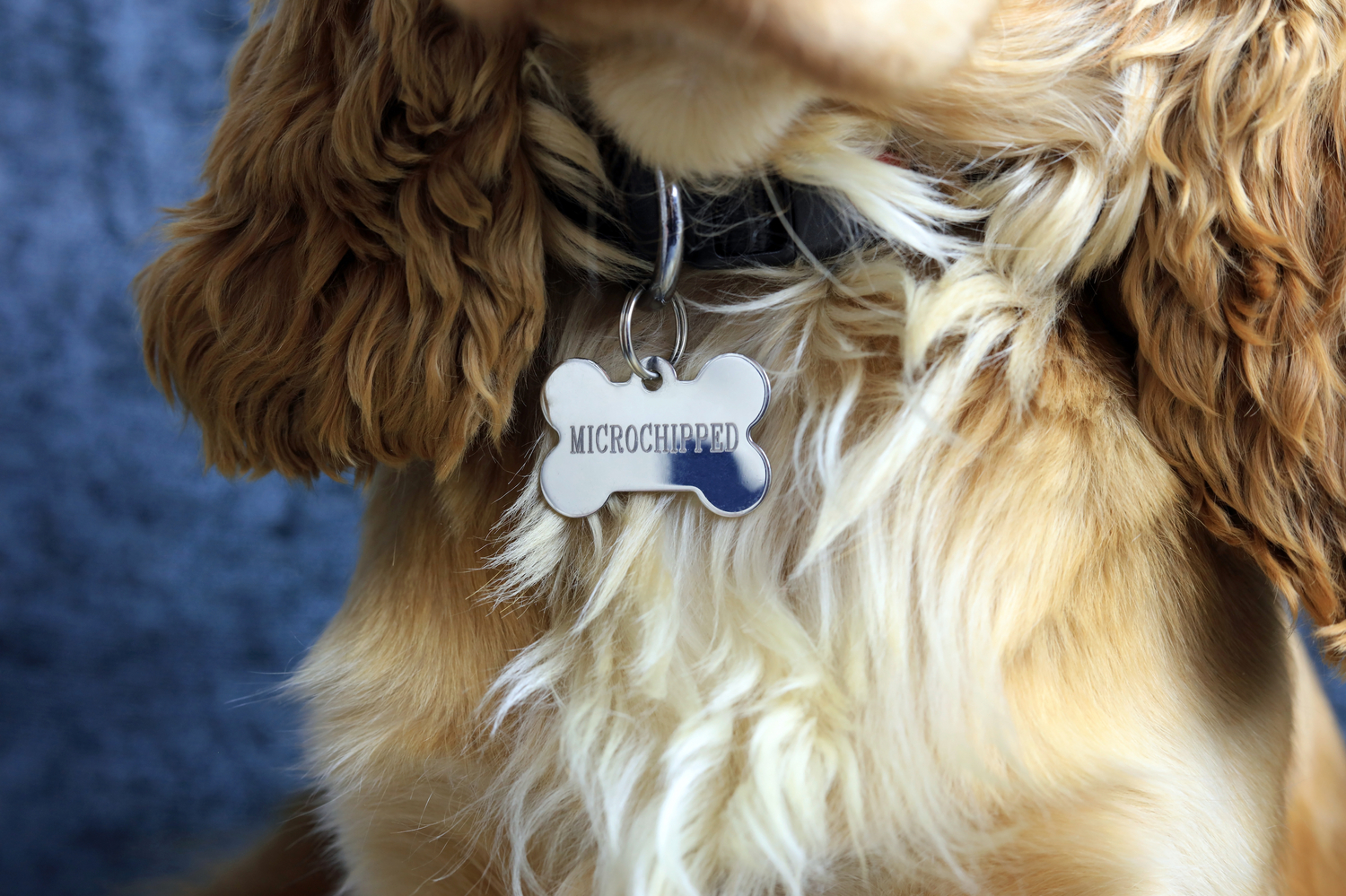6 Dog Sunscreen Picks for Summer Safety
Updated on April 24, 2024
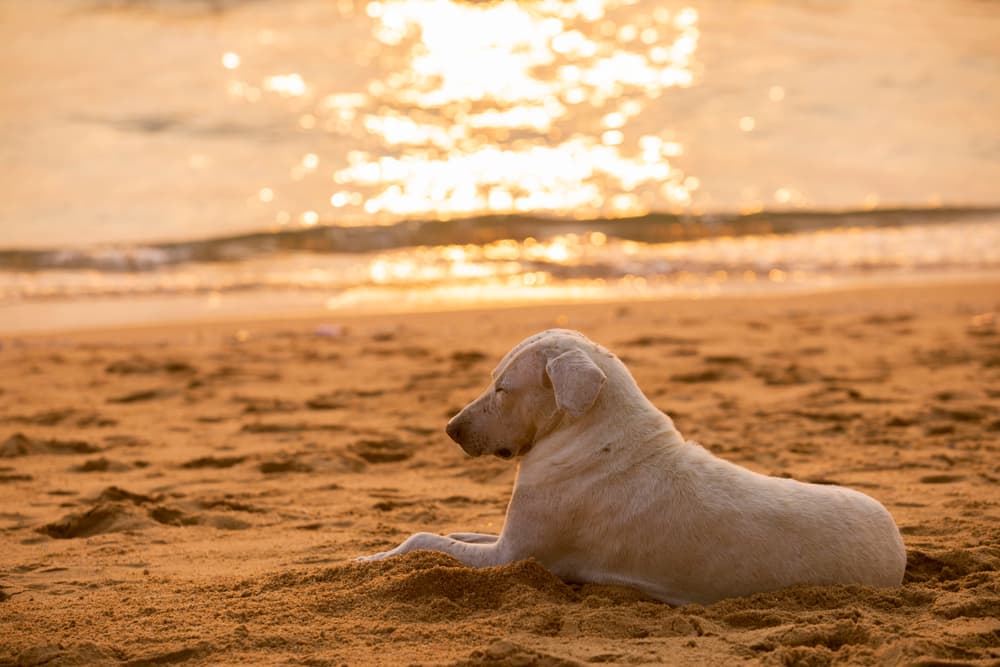
Most of us wouldn’t dream of going to the beach or spending a long day outside without applying sunscreen, and yet we allow one of our most precious family members—our dogs—to play in the sun without protection. While it’s easy to assume that their long coat acts as its own kind of SPF (and you’d be right!), it doesn’t completely protect them from UV radiation.
Too much time in the sun can lead to red, painful, sunburned skin. In fact, dogs can actually get many of the same skin cancers that humans do. Protecting them for sun damage is important for both their day-to-day health as well as long term. Using sunscreen for dogs is one way to do so.
Can Dogs Get Sunburns?
Just like humans, dogs can get sunburns from spending too much time in the sun. They look similar to human sunburns, too. “The most obvious sign can be reddening of the skin. Worse burns will be a deeper shade of red,” explains veterinarian Leah Brown. “A more subtle sign is curling at the edges of the ears. Other symptoms can be blisters, bumps, skin peeling, and tenderness of the skin. More severe burns can cause fever and lethargy.”
Some dogs are more prone to sunburn, like those with lighter skin and shorter, thinner coats. If your pet has a short haircut for summer or is experiencing hair loss in any area, that can leave them more exposed, too. “Some dogs love to lay in the sun and expose their belly which usually doesn’t have as thick of hair and that can be a major problem area for some animals,” says veterinarian Hunter Finn. “Some common areas for burning include the bridge of the nose, ear tips, around the lips, underbelly, and really any areas with less pigmentation and less hair coverage.”
If not protected, these more exposed areas leave your dog at risk for sunburn and any complications that too much UV radiation can cause.
Our Top Picks
All featured products are chosen at the discretion of the Vetstreet editorial team and do not reflect a direct endorsement by the author. However, Vetstreet may make a small affiliate commission if you click through and make a purchase.
- Banana Boat Sun Protector Spray
- Epi-Pet K-9 Care Sunscreen
- Petkin Dog Sunscreen Sunstick
- My Dog Nose It Moisturizing Sun Protection Balm
- Emmy’s Best Pet Products Dog Sun Protector
- Bodhi Dog Sunscreen Moisturizing Pet Sunscreen
Best Dog Sunscreen: 6 Options to Consider
Here are six of our favorite dog sunscreen options and what makes them stand out:
Banana Boat Sun Protector Spray
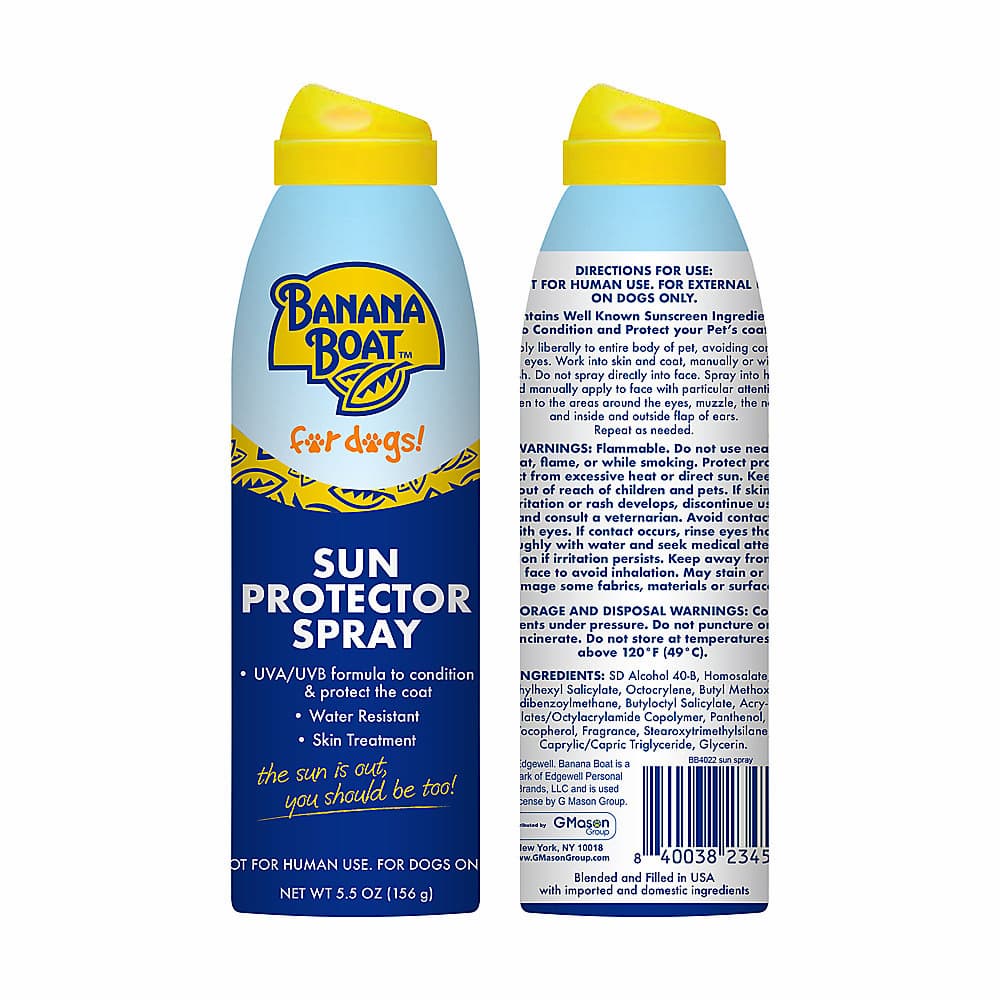
This sunscreen spray protects your pet’s skin using some familiar sunscreen ingredients, like homosalate and octocrylene. The spray is water resistant, so it’ll last through light sweating and play in the water. However, it should be reapplied after swimming to maintain sun protection. As a bonus, the sunscreen contains ingredients that support a healthy, shiny coat while it protects.
Highlights
- Water resistant
- Conditions while it protects
- Spray makes it easier to apply everywhere
- Uses well known sunscreen ingredients
Things to Consider
- Should be reapplied after swimming
- Use caution when applying to face and ears
Epi-Pet K-9 Care Sunscreen
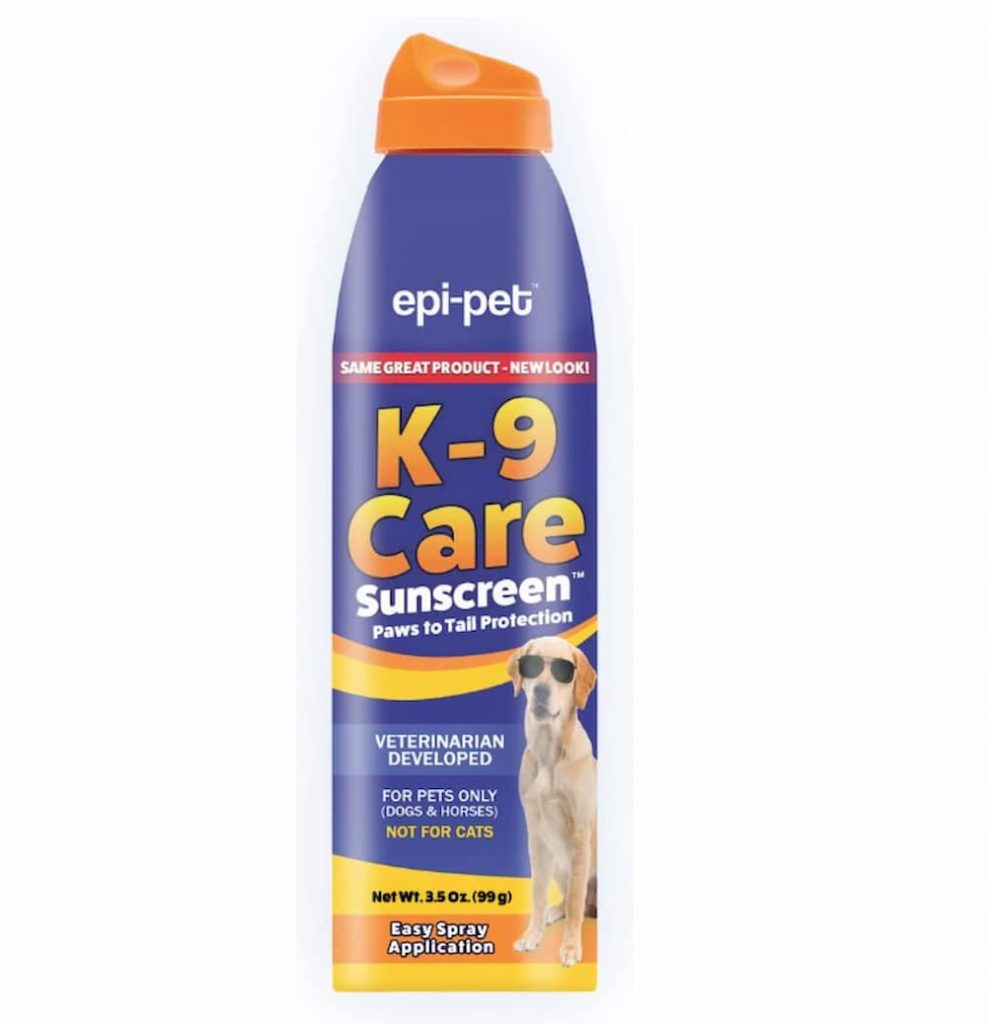
While dog sunscreen doesn’t adhere to the same standard SPF scale as people sunscreen, this one can be compared to a 30 to 40 SPF sunscreen. The spray formula isn’t greasy and stays on through sweat and water (but should be reapplied every two hours). It’s also fragranced with a light vanilla scent, so you can avoid the wet dog smell that might pop up after a day at the beach. Like any spray sunscreen, it needs to be worked into the coat and skin after application to ensure full protection from the sun.
Highlights
- Equivalent to SPF 30-40 sunscreen
- Not oily or greasy
- Water resistant
- Contains coat conditioning ingredients
Things to Consider
- Reapply every two hours
- Be cautious when applying around face and ears
Petkin Dog Sunscreen Sunstick
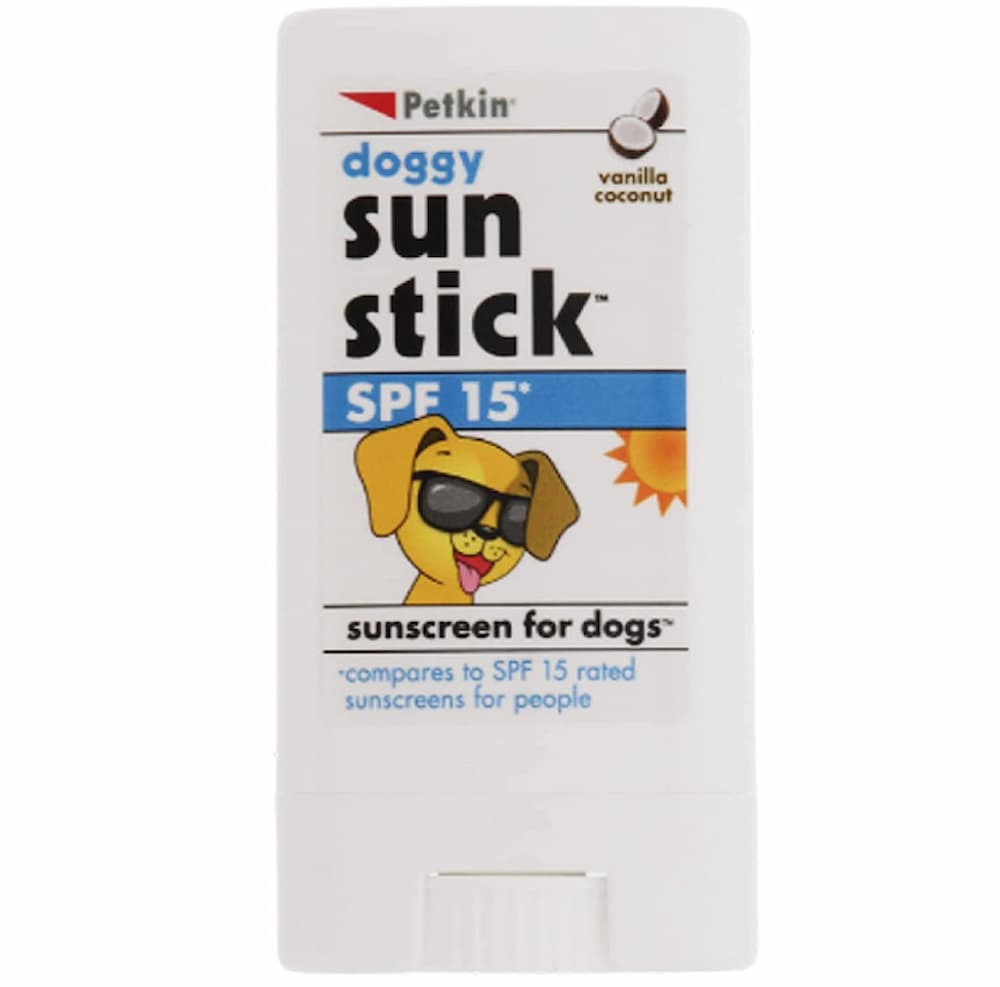
If you prefer to stay away from sprays, this stick sunscreen is not only simple to apply but also travel friendly. Instead of spraying your pup all over, this stick makes it easier to target burn-prone areas, like the ears and nose. It’s especially important to reapply often with this product since it’s not water resistant (but as a bonus, it will wash off easily with water when needed).
Highlights
- Equivalent to SPF 15
- Vanilla coconut scented
- Travel friendly
Things to Consider
- Not water resistant
- Not ideal for full body coverage
My Dog Nose It Moisturizing Sun Protection Balm
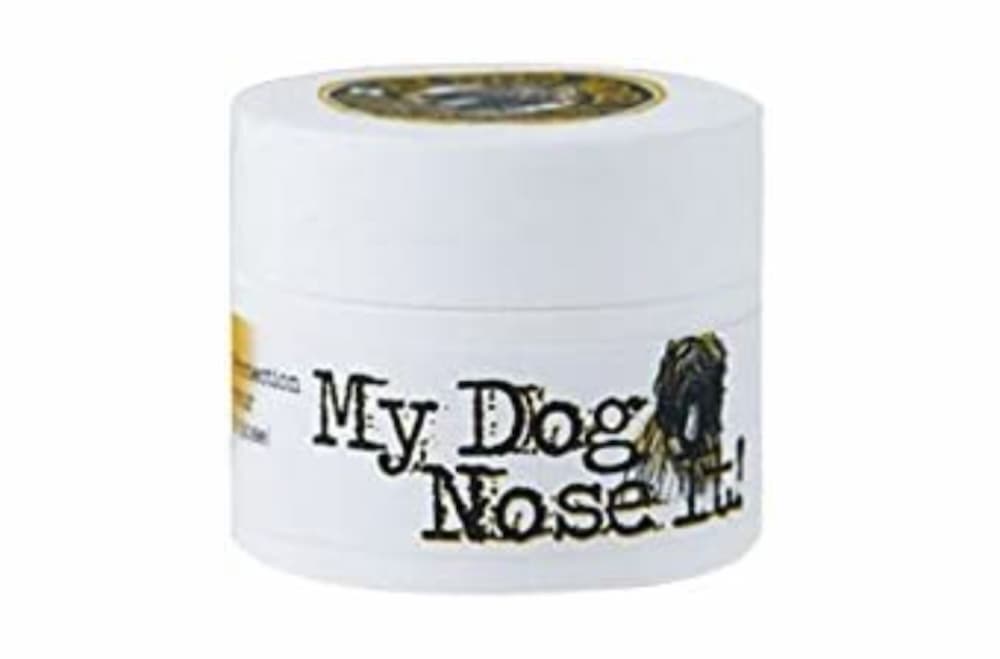
Sometimes, a little extra protection on the nose is all your pet needs. This balm is easy to apply, is water resistant, and moisturizes your pet’s skin and coat with carnuba wax and coconut oil. Despite the name, this balm can be used anywhere your dog needs a little extra protection, like their ears or belly. It’s water resistant but not waterproof, meaning you’ll still need to apply if it rains or your pet goes swimming. It’s lick-safe, so there are no worries if your pet ingests some of the product.
Highlights
- Thick, balmy consistency
- Water resistant
- Moisturizing ingredients
Things to Consider
- Not ideal for full body application
- Reapply every two hours
Emmy’s Best Pet Products Dog Sun Protector
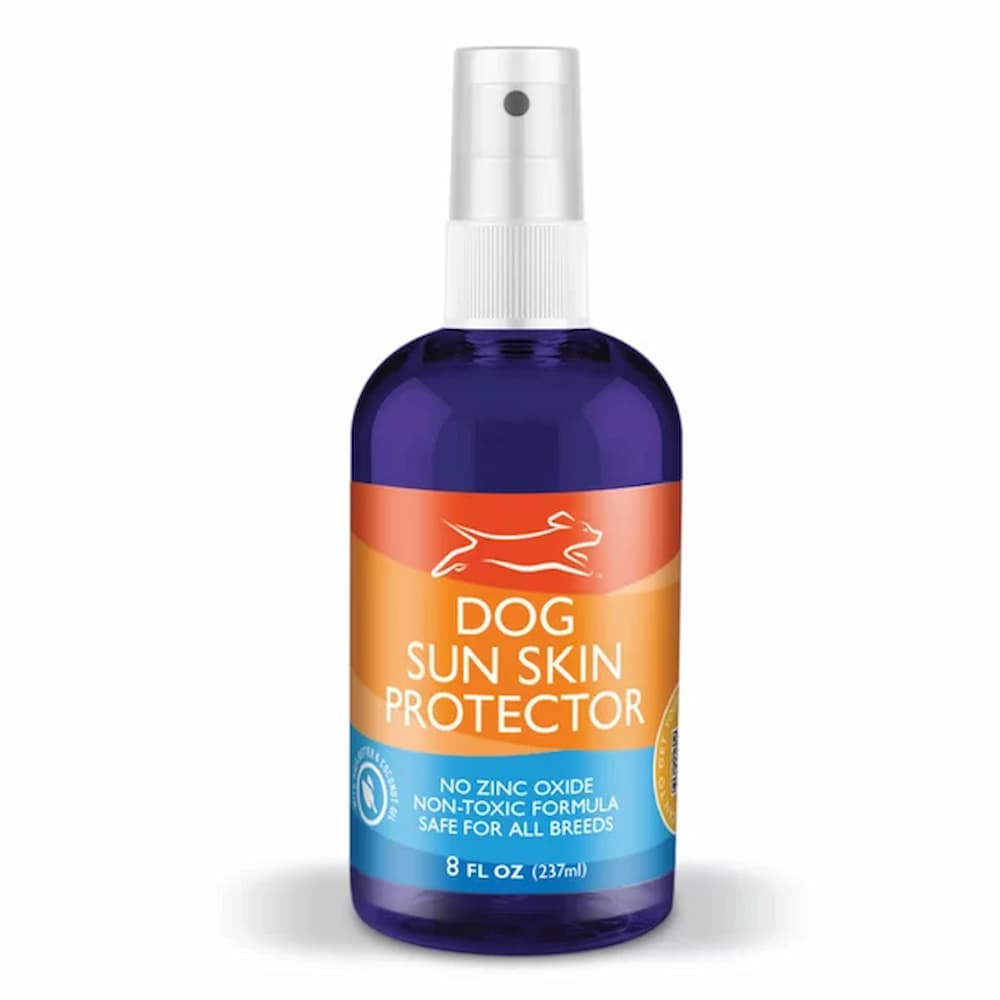
This sunscreen hydrates coats with shea butter and coconut oil, and uses octinoxate, a proven sunscreen ingredient, to protect. The non-toxic and non-greasy formula isn’t water resistant, so frequent reapplication is a must. And unlike other sprays, this non-aerosol bottle makes it easier to target the application site—but it still shouldn’t be sprayed directly on a dog’s face.
Highlights
- Contains coconut oil and shea butter to moisturize
- Non-aerosol spray bottle
- Uses safe sunscreen ingredients
Things to Consider
- Not water resistant
Bodhi Dog Sunscreen Moisturizing Pet Sunscreen
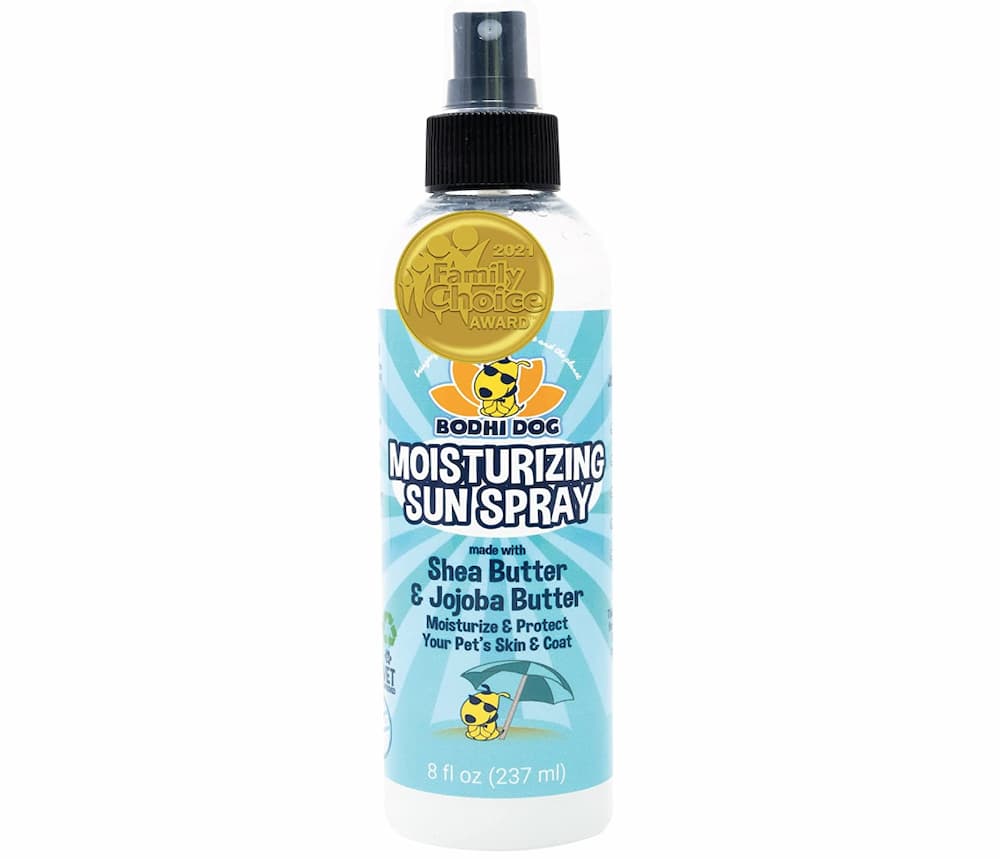
Protect your dog’s skin and support a family-owned, Austin, Texas-based business with this buy. This sunscreen from Bodhi Dog offers around 30 SPF protection using octinoxate, a dog-safe UV filter. Meanwhile, shea and jojoba butter moisturize your dog’s coat and add extra protection from salty water and hot air. There’s no added scent, so it’s a good choice for those who are sensitive to fragrance.
Highlights
- Shea and jojoba butter moisturize dog’s coat
- Comparable to SPF 30
- Water resistant
- Fragrance-free
Things to Consider
- Reapply every two hours
Sunscreen for Dogs: Buyer’s Guide
While sunscreen for dogs might look a lot like what you use on your own skin, the formulas are specifically made with your pet’s safety in mind. “Some sunscreen products are created for pets and this is what I would recommend,” Finn says. “If you are putting it on your dog or cat, please read the label and ensure it is intended for that animal.”
“You want to pick a pet-safe, waterproof, SPF 30+ sunscreen for your dog,” Brown recommends. Again, keep in mind that dog sunscreen doesn’t adhere to the same standard SPF rating as human sunscreen. Instead, products often share an approximate SPF equivalent. Spray sunscreen is OK to use, but don’t spray directly into your dog’s face. “Apply it to your hand and rub it on your dog’s face. Otherwise, these are more likely to get into your dog’s eyes and cause irritation,” she says.
Brown recommends patch testing when trying a new sunscreen to be sure it doesn’t cause your dog any irritation. To do this, apply the sunscreen in a small area and monitor it for a day or two before applying the product all over.
“As a side note, if you are using sunscreen on your kitty, avoid those that contain salicylates or acetylsalicylic acid because this is toxic to cats,” Brown says.
Dog Sunscreen FAQs
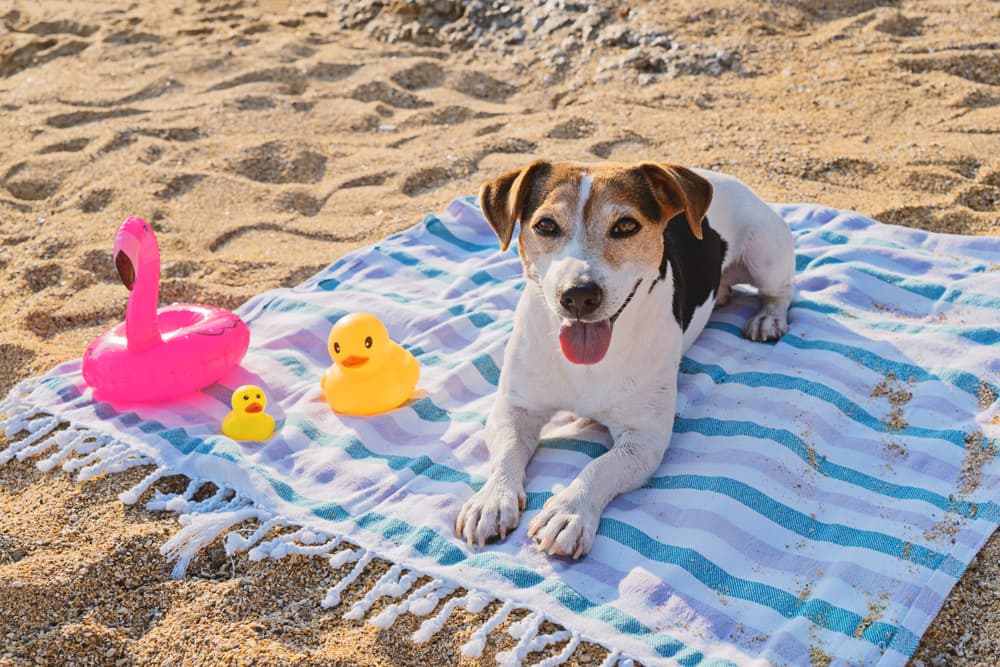
Do dogs need sunscreen?
Dogs don’t need sunscreen, however it’s usually the best option for protecting your pet from the sun. If your dog will be outside for a long period of time when the sun is most intense, then sunscreen is ideal. Otherwise, sticking to the shade and playing inside when UV radiation is highest can be good alternatives.
Can dogs use human sunscreen?
While not every human sunscreen will be dangerous for pets, it’s not a risk worth taking—there are many ingredients used in human sunscreen that can cause adverse reactions to pets. Zinc oxide, for example, a mineral found in many sunscreens, is actually toxic to dogs. If ingested, it can cause major damage to red blood cells. PABA, or para-aminobenzoic acid, is also toxic.
Can you use baby sunscreen on dogs?
“Some baby sunscreens can be safe for pets, but you want to ensure there are absolutely no ingestion warnings because these products contain ingredients that can absolutely be toxic if licked by a dog or cat,” says Finn. Again, a product with zinc oxide is a big no-no. To be safe, stick with sunscreens formulated for pets or those that specifically say they are safe for dogs.
What sunscreen is safe for dogs?
Sunscreens made with titanium dioxide are ideal for pets, and those with octinoxate and oxybenzone are safe as well. Salicylates are safe in moderation, but can cause skin irritation if they are a high percentage of the ingredients (don’t forget to patch test!). Avoid sunscreens with zinc oxide and PABA.
Can you spray sunscreen on dogs?
Many of the sunscreens for dogs are spray-on options because this tends to be the easiest way to cover your dog’s coat quickly. But spray sunscreen shouldn’t be used everywhere—never spray it directly onto your dog’s face or inside their ears. Instead, spray the sunscreen into your hand and then apply. This keeps the product out of your pet’s eyes and prevents them from breathing in the product. To ensure full coverage, it’s also a good idea to follow up the spray by rubbing in the product by hand.
Sunscreen for Dogs: Tips & Advice
If you haven’t begun using sunscreen on your dog, now’s the time to start. Any time your pet might have sun exposure, you can apply sunscreen, but there are times when it’s most vital. “In a perfect world, pets should avoid the sun between 10 a.m. and 3 p.m., but if that is not possible, then during those hours sunscreen can be applied to the appropriate areas,” Finn says. The UV index is higher during that time frame and the sun is stronger, making sunburn more likely.
“You should focus on areas that have less hair such as the nose, ears, belly, groin, and the lips,” Brown says. “Reapply throughout the day and immediately after any water exposure.” When in doubt, apply every two hours to keep your pup protected throughout the day.
If your pet comes home with a sunburn anyway, treat it at home or head to the vet if the case looks severe enough and you’re concerned (especially if your pet develops a fever). “In order to give your dog relief until they can get to the vet, you can use cold compresses on the affected areas,” Brown says. “Ensure that your pet has access to plenty of fresh, clean water.”
On days when the sun is hottest, make sure to provide shade and an opportunity for your pet to stay cool and out of the rays, and don’t forget to reapply sunscreen.

